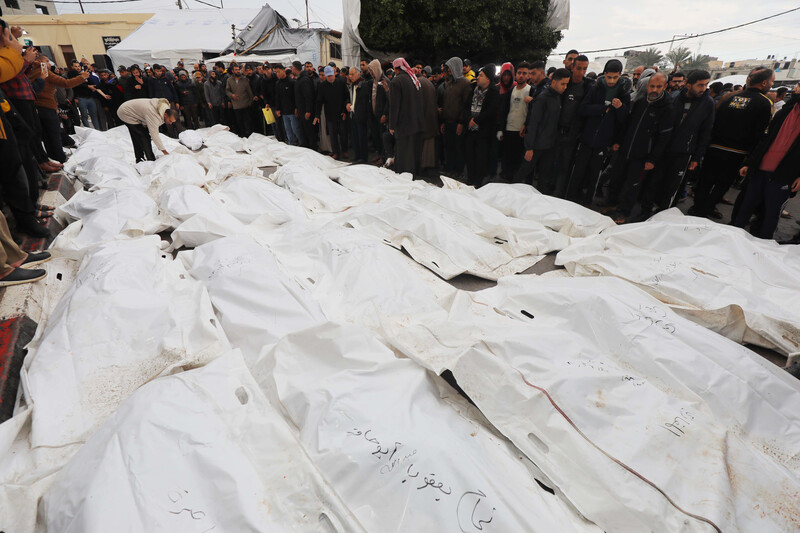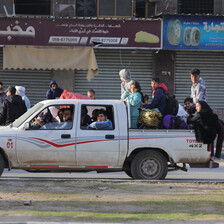The Electronic Intifada 26 December 2023

The funeral for victims of the Maghazi massacre.
APA imagesAn Israeli airstrike mercilessly targeted four houses in Maghazi refugee camp, central Gaza on 24 December. The houses have been turned into graves.
At least 70 people were killed. Scores more were injured.
Maghazi camp is densely populated and was already pushed to the limit before the massacre. Large numbers of people from northern Gaza had taken shelter there.
In the days before the massacre, there had been many new arrivals in Maghazi and surrounding areas. Israel had ordered residents of al-Bureij and Nuseirat refugee camps to leave their homes, giving them false promises of safety.
The forced exodus and now the massacre will exacerbate the already dire conditions in Maghazi.
The ramifications of Israel’s forced exodus are felt acutely in a camp that once had a strong community spirit.
With its homes overcrowded, families are grappling with the scarcity of resources.
Ashraf al-Qedra, the spokesperson for the Gaza health ministry, said, “What is happening in Maghazi camp is a genocide in a crowded residential block.” The death toll is likely to rise.
Bloodiest night
As well as the airstrike which caused the massacre, Israel’s shelling of Maghazi and al-Bureij camps has been relentless recently.
A resident of Maghazi spoke about the heart-wrenching search he is undertaking for his loved ones. With every step amid the ruins of their home, he sought to find the bodies of his parents, siblings and their children.
The rubble was so heavy that recovering their bodies was impossible.
“I survived,” the man said, his voice trembling with grief. “But I don’t know where my parents and brothers are.”
Another resident said, “We will always remember this night [24 December]. It is the bloodiest in Maghazi since the war began.”
A somber atmosphere prevails at al-Aqsa Martyrs hospital in nearby Deir al-Balah. The bereaved have been coming to the hospital so that they can pay their final respects to the victims of the massacre.
The bodies of the deceased were kept in a makeshift tent within the hospital grounds ahead of a funeral.
Established in 1949, Maghazi is among the smallest refugee camps in the Gaza Strip, both in terms of its physical size and population.
Its narrow alleys bear witness to the daily struggles of its residents – more than 33,000 before the war – who have sought refuge within an area that does not exceed 0.6 square kilometers.
Among those killed in the massacre is Ahed Abu Hameda, a talented artist, playwright and drama trainer. His loss deeply impacts both the artistic community and the broader society.
Ahed’s contributions to the arts in Gaza City, particularly through his work with Theatre Day Productions, have left an indelible mark on the cultural landscape of the region.
Ghada Abed is a journalist based in Gaza.





